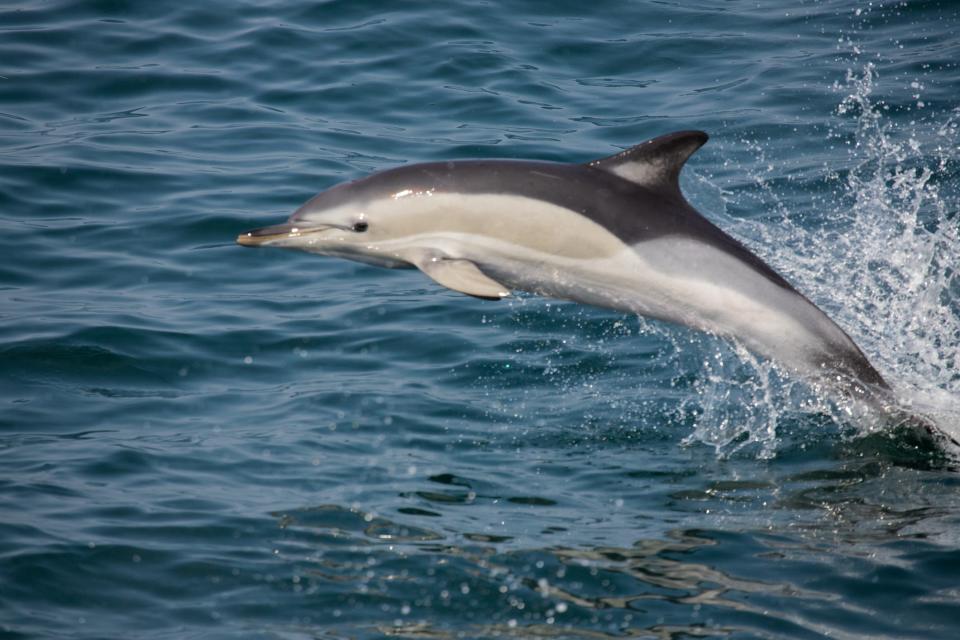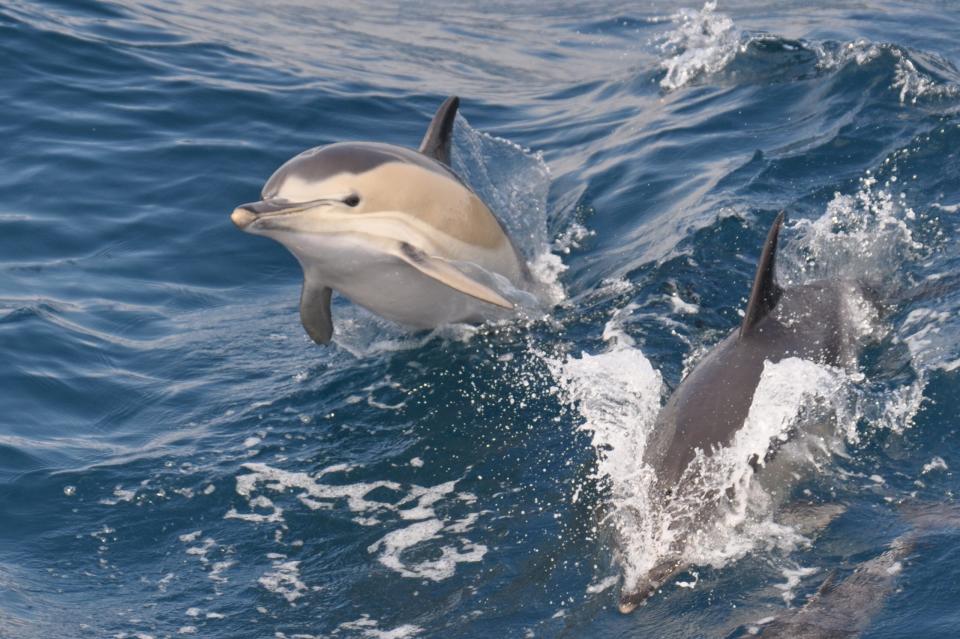Porpicide?: Dolphins are killing porpoises. Scientists don't know why.
I am not an expert on marine mammals, being an invertebrate biologist, so I was surprised by a video I watched last week. It documented an attack by a group of bottlenose dolphins in Wales on a solitary porpoise. This behavior was not as unusual as I assumed. So, how does this pertain to the Gulf of Maine? What are these animals, and do they inhabit our waters?
In the Gulf of Maine, we are most acquainted with baleen whales. Our whale watch trips are full of photos of humpback whales feeding and breaching, minke whales speeding alongside the boat, and fin whales cruising along as if on a mission. Baleen whales have baleen plates hanging down from the roof of their mouth. Baleen consists of keratin, the same substance found in human fingernails. They use these plates to filter out plankton and small fish from the seawater. We also have toothed whales here, harbor porpoises, Atlantic white-sided dolphins, common dolphins, bottlenose dolphins, pilot whales, an occasional sperm whale, and killer whales. These whales have teeth and eat other animals, mostly fish and squid.

The main species of porpoise in the Gulf of Maine is the harbor porpoise. As with almost all porpoises, the harbor porpoise has teeth shaped like spades, narrow at the base, and rounded at the top. They are not used for chewing but more for grabbing prey and swallowing it whole.
The female harbor porpoises are generally larger than the males and weigh around 168 pounds while the males are around 134 pounds. They are dark gray above with speckled sides and lighter beneath. These are the smallest of the cetaceans, and their body shape has been described as “portly.” Their dorsal (top) fin is triangular, and they rarely jump out of the water. All cetaceans use echolocation to hunt and forage, but the sound produced by the harbor porpoise is a frequency humans cannot hear. These animals are sometimes solitary and often wary of humans.
While the most common dolphins here are the Atlantic white-sided dolphins, common and bottlenose dolphins are also found in the Gulf of Maine. Dolphins are usually larger than porpoises and have a distinctive snout or “beak,” which is narrower and more pointed than a porpoise. Their dorsal fin is curved. Their echolocation technique entails detailed clicking, and they can make other whistling sounds. Their teeth are conical and used to trap prey and swallow them whole.
From red mud to pizza: Meet the super stars in the Gulf of Maine and beyond
The white-sided dolphin is large, between 8-9 feet and 360-505 pounds. The males are slightly larger than the females. They are dark gray with light gray sides, with a white underside and a tan streak along their flank. They are communal animals often found swimming in groups of 5 to 50 or more. These dolphins have a smaller beak compared to the bottlenose dolphins and are often seen breaching and jumping through the waves.
We must remember that these are apex predators.
With their “cute” faces and large eyes, we often forget they are wild animals, not cute and cuddly pets. The 1960s show “Flipper” and Dolphin shows from many aquariums, gave us an inaccurate view of the bottlenose dolphins. They are highly intelligent, but still wild animals, with the necessity of hunting for their food.

The term “porpicide” was coined several years ago to describe the killing of porpoises by bottlenose dolphins. While it has rarely been directly observed by humans, the results of the attacks have been brutal. The bodies of several species of porpoise have washed up on shores with bite marks and broken bones, which scientists have attributed to dolphin attacks.
It has been documented that dolphins participate in infanticide. Scientists believe this may have to do with their very active sex life. There are several theories about why they are killing porpoises. Some believe the dolphins or porpoises have expanded their range and are competing for food. Another thought is this is an act of young males practicing infanticide. The final theory entails young males acting out sexual frustration. All of which are just conjectures on the part of scientists.
Invasion?: 'American' blue crabs are taking over the Mediterranean Sea
The BBC reported on probably the best documentation of porpicide ever. It was seen by a whale watch vessel from Wales. They observed a solitary porpoise just after they passed a group of bottlenose dolphins. It was evident the moment the dolphins realized there was a porpoise ahead of them. They proceeded to chase the porpoise, who tried to outrun them by hiding under the boat while horrified passengers watched. The attack was brutal and fatal. The porpoise was just left to die. While this must have been terrible to watch, it was a natural behavior.
Fortunately, I have never heard of porpicide here in the Gulf of Maine, but it would not surprise me if it did. While we do not know the reason for this behavior, it may be they kill just because they can. Not so different from many land mammals. It can be a brutal world.
Swimming with the dolphins is off my bucket list. I am just about the same size as a porpoise. I’ll just continue to enjoy them from afar!
Ellen Goethel is a marine biologist and the owner of Explore the Ocean World at 367 Ocean Blvd. at Hampton Beach.
This article originally appeared on Portsmouth Herald: Porpicide: Dolphins are killing porpoises. Scientists don't know why.

